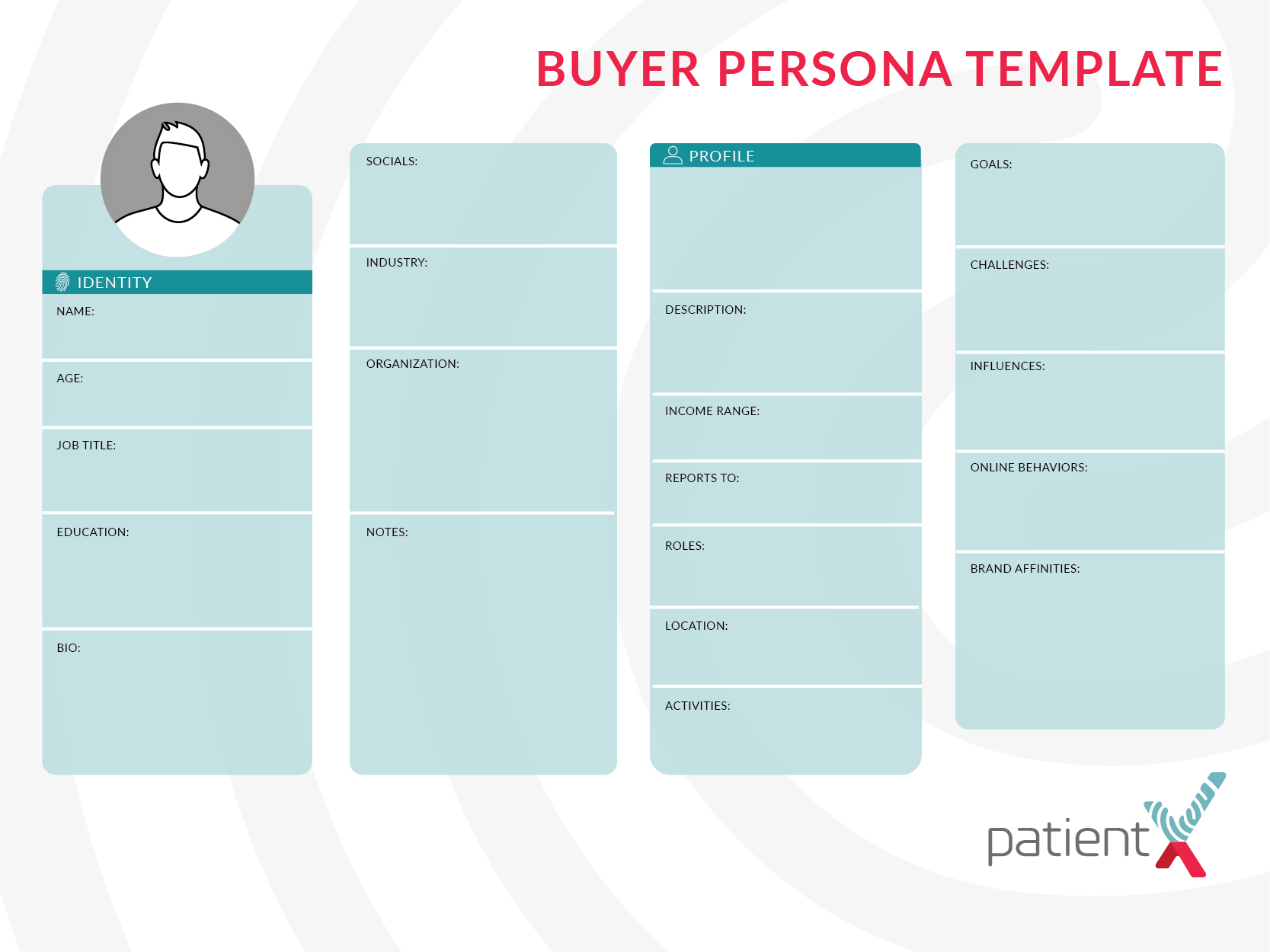When you’re marketing, it’s important to have a target audience. This is true for inbound marketing, content marketing–or basically any other kind of marketing. You need to know who you’re marketing to in order for any particular strategy or asset to be successful.
So, who is that target audience? Well, your first instinct might be to keep things simple and say, “everyone!” It sounds good. And even a few experienced marketers (or their clients) might make this mistake. But the truth is that when you try to make everyone like your brand, you ensure that absolutely no one will love your brand.
When you market towards a specific audience, you can ensure that your messaging is persuasive and affecting–not to mention effective. To accurately identify that audience, many marketers will use a tool called personas (sometimes referred to as buyer personas). Here’s how they work.
What is a Persona?
As a healthcare organization, your target audience is likely pretty specific. For example, if you run a surgery center that specializes in knee or hip replacement procedures, your average patient is probably a little on the older side. They also may be experiencing limited mobility.
You know your audience! But to market to that audience, you need to know granular detail. That’s where a marketing persona can come in.
A persona (sometimes called a buyer person) is kind of like a file on a fake patient. Usually, these personas get names (Jane is common). And the file is filled with all kinds of useful, specific information about Jane. This information isn’t necessarily true–it’s not lifted from any one patient. But the persona is representative. That is, if done properly, you will have a lot of patients just like Jane.
A typical user persona may include information such as:
- Demographic information (age, gender, location, etc.)
- The type of car driven.
- Education levels.
- Things this representative person does for fun.
- Income levels.
- Hobbies.
- And more.
Ultimately, the more granular personas are, the more utility they’ll provide–so long as they remain representative.

Why is a Persona Important?
The importance of buyer personas is difficult to underestimate–but it’s also, sometimes, difficult to see. In general, personas are important because they work with human nature. They make it easier to be consistently persuasive. And they work! Over 50% of marketing companies generated higher leads when using personas to guide their work. And 36% of companies were able to shorten their sales cycle because of personas.
Additionally, user personas allow your teams to consistently appeal to the right audience across your whole strategy. Print teams, digital teams, sales teams–they’re all on the same page because they’re all guided by the same user personas. They all have the same audience.
This is especially important with inbound marketing, as inbound strategies rely on knowing your audience remarkably well. A thoroughly crafted persona can help marketing teams anticipate what information patients might be looking for and better position your healthcare brand to be the solution.
How Can You Create a Marketing Persona?
In general, marketing personas are the manifestation of real data. Which means the first step in persona creation is to take a look at that data. Examine the data you have and create a representative sample from that data. (If most of your hip replacement patients are between the ages of 50-70, maybe your user persona should be 60 years old.)
Use the Right Data
It’s important in a marketing setting that this data comes from your marketing teams–and that HIPAA rules are followed every step of the way.
The more data you have, the more representative your personas will be. Still, there may be some instances in which outside research or simple intuition will need to guide your persona creation. For example, does your average patient drive a Lexus, a Toyota, or a Chevy? To a certain degree, the answer should align with how you think of your ideal patient–not necessarily what’s out in the parking lot. (That said, what’s out in the parking lot is not to be ignored.)
Once your personas are created, it’s incredibly important to share them among your teams and make sure everyone has access to them.
The Power of Personas
At PatientX, we understand the power of personas. They feel time consuming to create, especially at first. But done well, user or buyer personas can guide your marketing in much more effective and meaningful ways. Instead of trying to look great to everyone–you’ll look amazing to your target audience, the people who are really going to seek out your services.
But you don’t have to do all the work yourself. You can partner with an experienced healthcare marketing agency like PatientX–and take your marketing to the next level.

